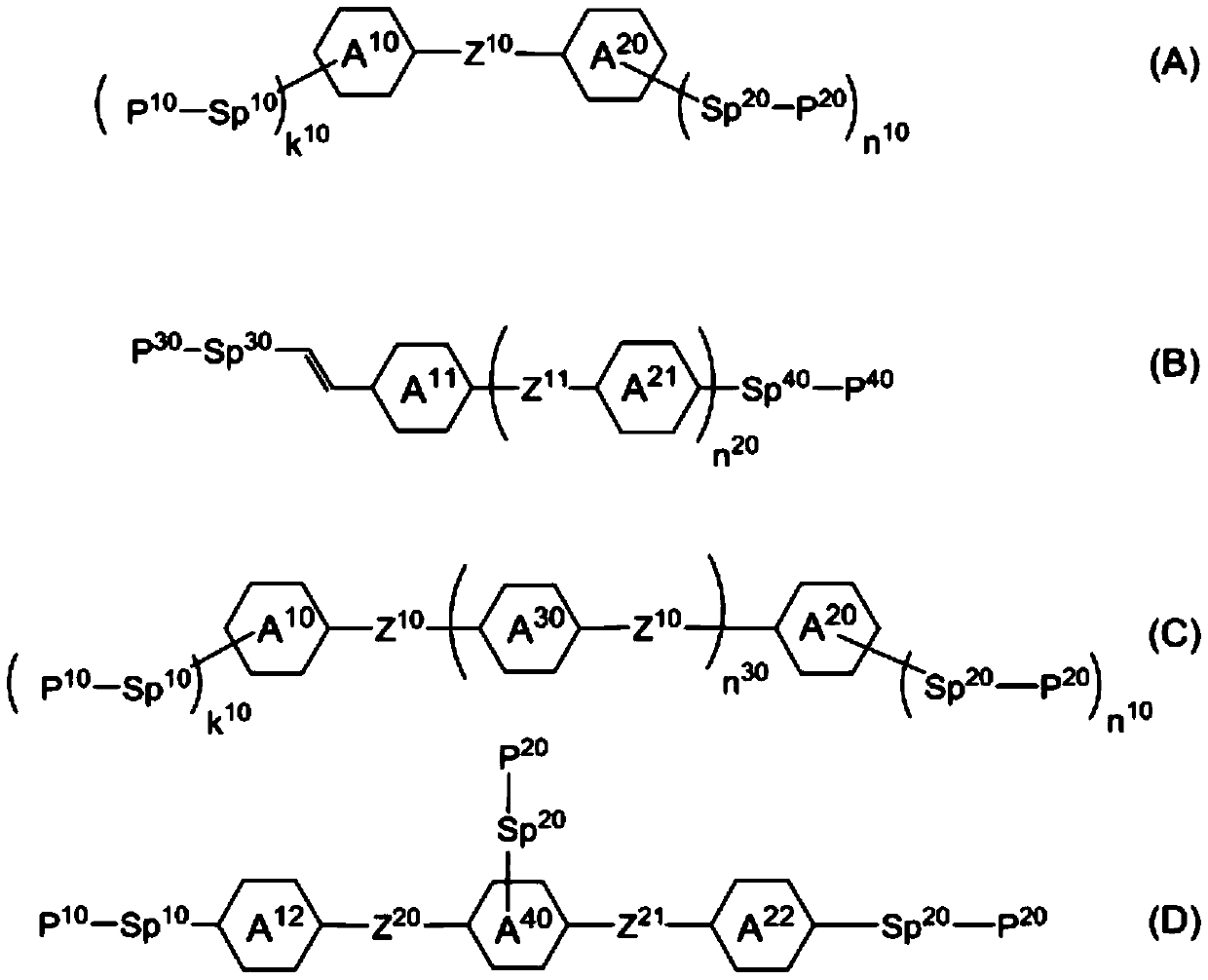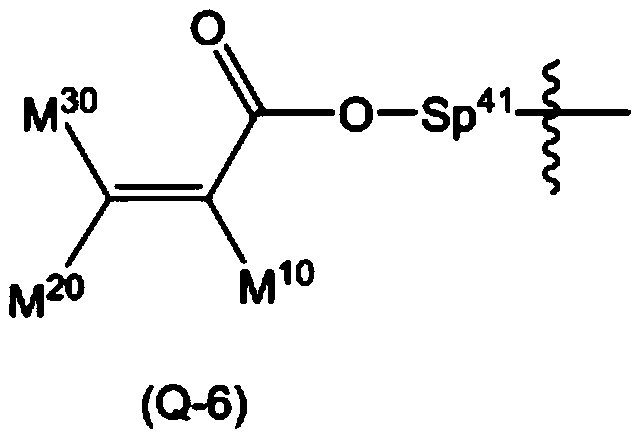Liquid crystal display element, liquid crystal composition, and compound
A technology for liquid crystal display elements and liquid crystal compositions, which are applied in the directions of liquid crystal materials, organic chemistry, chemical instruments and methods, etc., to achieve the effects of excellent transmittance characteristics or contrast, and reduction of manufacturing costs
- Summary
- Abstract
- Description
- Claims
- Application Information
AI Technical Summary
Problems solved by technology
Method used
Image
Examples
Embodiment 1
[0369] The alignment monomer (A-1-1) was added to the composition (M1) in a ratio of 0.3 parts by weight. The mixture was injected into an IPS element having no alignment film at 90° C. (above the upper limit temperature). While heating the IPS element at 90°C (above the upper limit temperature), the element is irradiated with linearly polarized ultraviolet rays (313nm, 5.0J / cm2) from the normal direction. 2 ), so as to obtain an element formed with an orientation control layer. The irradiated ultraviolet light becomes linearly polarized light by passing through the polarizer. Next, the device in which the orientation control layer was formed was placed on a polarizing microscope, and the orientation state of the liquid crystal was observed. The polarizer and the analyzer of the polarizing microscope are arranged such that their respective transmission axes are perpendicular to each other. First, the orientation direction of the liquid crystal molecules is parallel to the t...
Embodiment 2 to Embodiment 9
[0371] Compound (A-1-1) or compound (B-1-1) is added to composition (M2) to composition (M9). Except using the mixture and setting the injection temperature of liquid crystal and the temperature of polarized light exposure to the temperatures described in Table 4, a device was produced by the same method as in Example 1, and the same method as in Example 1 was used. Check for light leaks.
Embodiment 10
[0373] Compound (C-1-1) was added to composition (M10) in a ratio of 1 part by weight. The mixture was injected into an IPS element having no alignment film at 95° C. (above the upper limit temperature). Irradiate the element with linearly polarized light (313nm, 2.0J / cm2) from the normal direction at 100°C (above the upper limit temperature) 2 ). The presence or absence of light leakage was observed by the same method as in Example 1.
PUM
| Property | Measurement | Unit |
|---|---|---|
| temperature | aaaaa | aaaaa |
Abstract
Description
Claims
Application Information
 Login to View More
Login to View More - R&D
- Intellectual Property
- Life Sciences
- Materials
- Tech Scout
- Unparalleled Data Quality
- Higher Quality Content
- 60% Fewer Hallucinations
Browse by: Latest US Patents, China's latest patents, Technical Efficacy Thesaurus, Application Domain, Technology Topic, Popular Technical Reports.
© 2025 PatSnap. All rights reserved.Legal|Privacy policy|Modern Slavery Act Transparency Statement|Sitemap|About US| Contact US: help@patsnap.com



